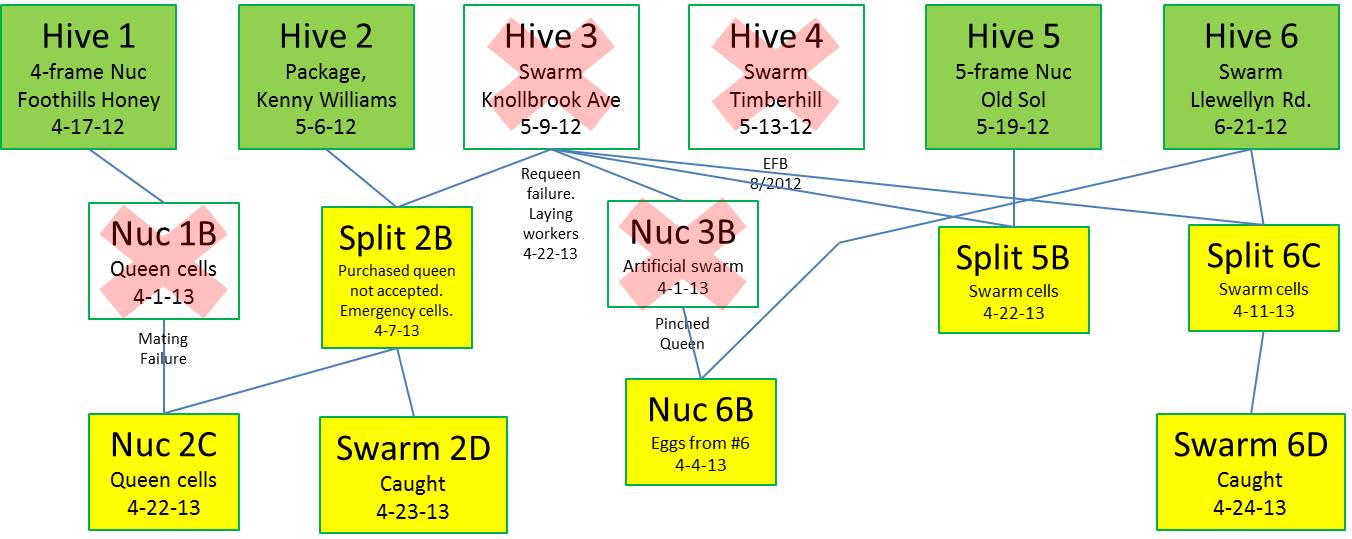Yesterday morning I was back tending to the big swarm from the previous post, moving the remaining clustered bees to near the box entrance. Just as they were all going in, I noticed an unusual number of bees in the air by our other hives. I wish I had taken a video, as I soon found a conveyor belt of bees pouring out of hive #2B. For a few short minutes they were all in the air, and I stood in the center of cloud of thousands of bees. Then the queen must have landed on a branch, and they all followed, forming a cluster of about volleyball size. I would say only about half to 2/3 the size of the swarm the previous day.
This was an easy capture, as they settled at eye level on a branch about 2″ in diameter. I pulled the swarm trap off of our roof, trimmed off side branches, cut the main branch on both sides of the swarm, and got 75% of the bees in with one shake. The rest followed quickly, and they seem to have accepted their new home.
And then there were 11.
This is not a hive I expected to swarm. Hive 2 had an underperforming queen, so we split it, moving the box with the queen away and attempting to requeen the remaining box with a purchased queen. They killed her and created emergency cells, and the new queens should be emerging right about now. The population was perhaps a bit high for one box, as bees from the other half of the split drifted back to the original site, but it didn’t seem too packed and I had given them an empty frame in the center to keep the broodnest open.
I think, like #6B the day before, that a sudden influx of bees from the shaken-out laying worker hive pushed the population over the swarm threshold, which combined with multiple queens emerging allowed them to fly the coop.
With all of these splits, I have to temporarily retire my hive organization diagrams in favor of a different sort, tracing the lineage of our various colonies.
 Only the green-filled hives have a laying queen at the moment; all of the yellow colonies have queen cells or virgins. Here’s hoping for successful mating. The weather couldn’t be better.
Only the green-filled hives have a laying queen at the moment; all of the yellow colonies have queen cells or virgins. Here’s hoping for successful mating. The weather couldn’t be better.
